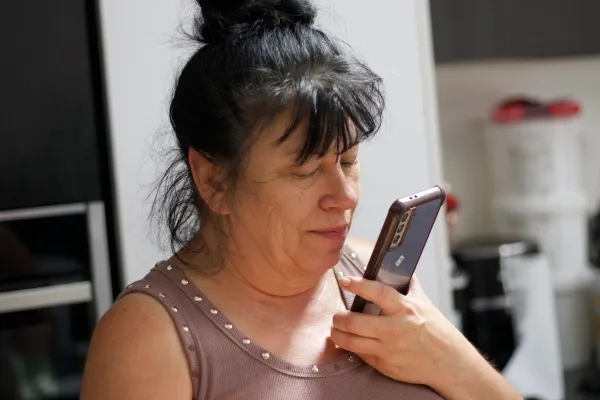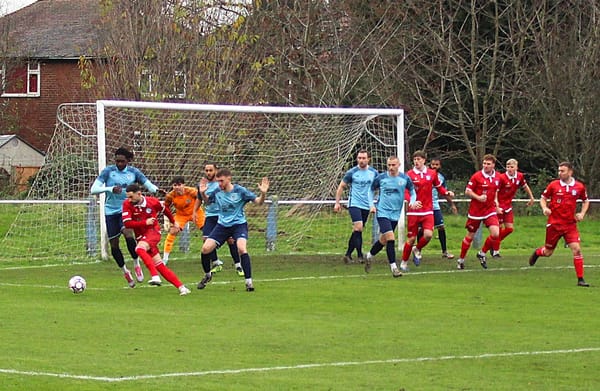Art meets language in new exhibition at The Hive Gallery
The installation provides people a foundation to explore on a personal level how text can be a tool to think, reflect and unpack ideas or events for us to connect with moments of the past, present and future.

In its newest exhibition, Let’s Talk About Text, the Hive Gallery in Bolton invites viewers to move beyond the printed page and explore the layered meanings of language. Through metaphor, memory, and material, the installation offers an introspective journey into how text shapes more than just the literal, evoking emotion, bridging time, and connecting the personal with the collective, the past with the present.
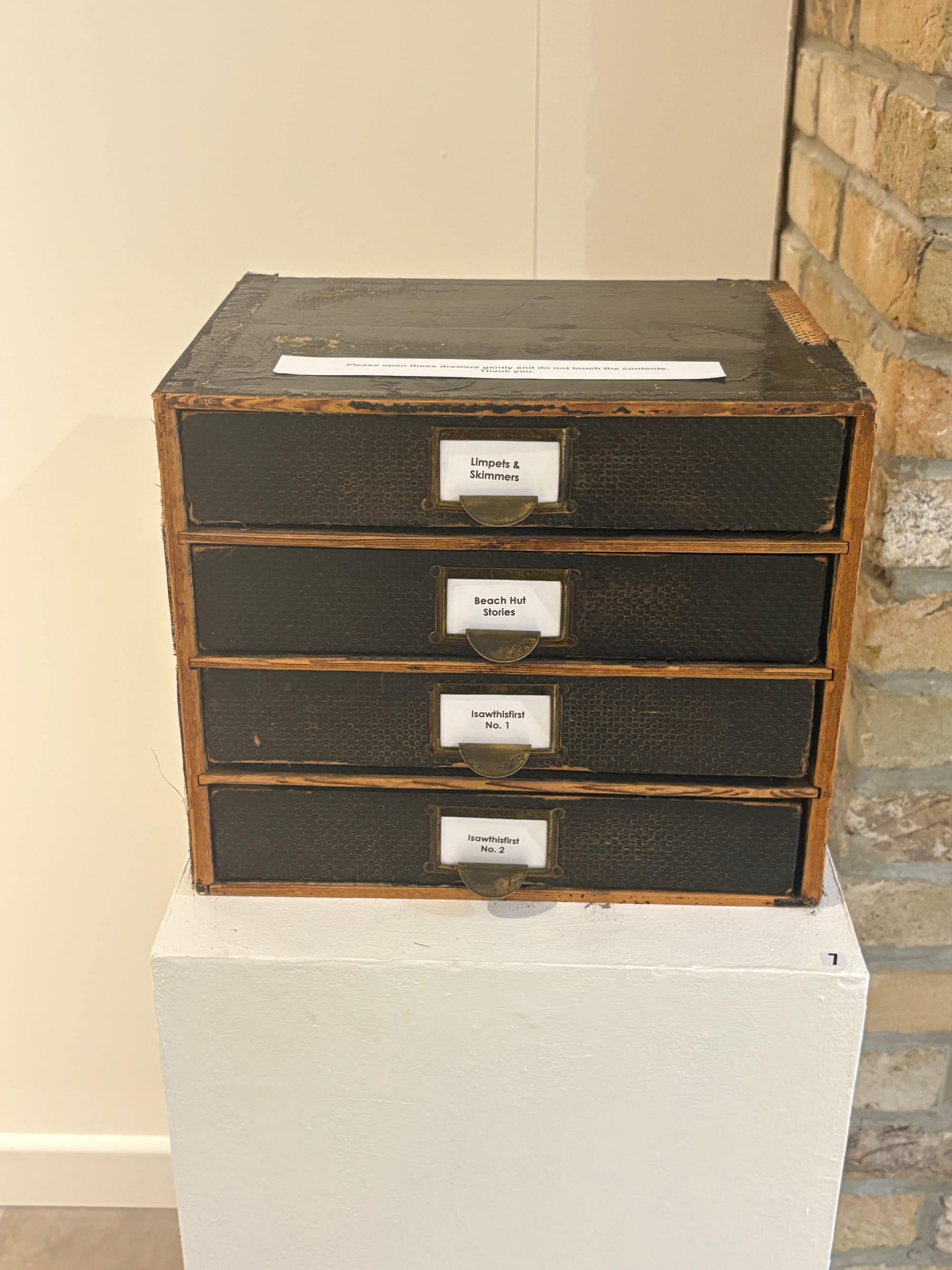
"Memory Box" by Julie Levy
Julie Levy's Memory Box is, at first glance, a small chest of drawers filled with a mix of everyday items. Her work, mainly installations and assemblages, often draws on personal connections and memories from her life. The chest itself was given to Julie by a friend and originally used in a post office to store paper forms. Now, it holds objects like seashells and pieces of slate, each etched with fragments of memory, with words spiralling in different directions and varying in size.
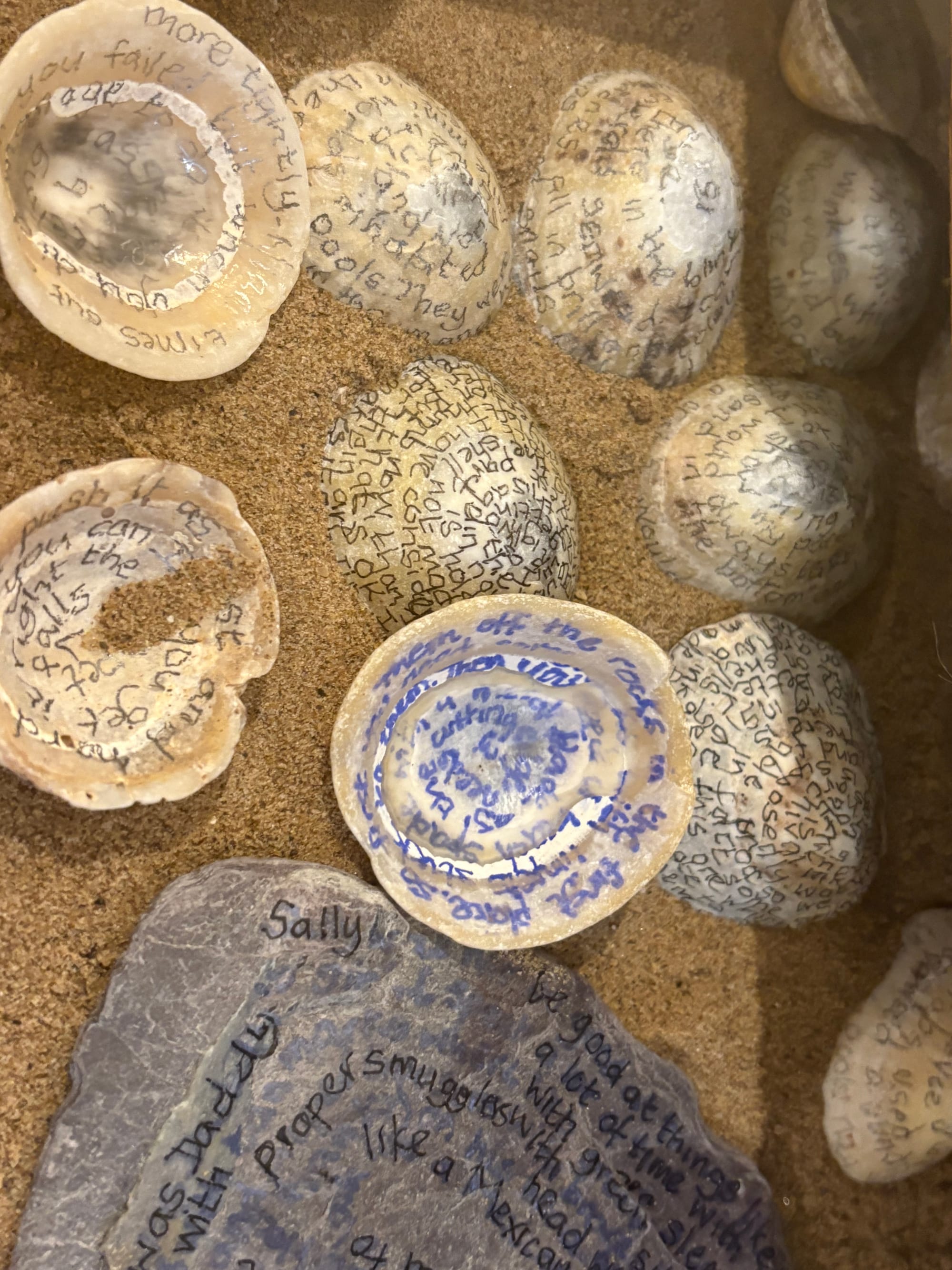
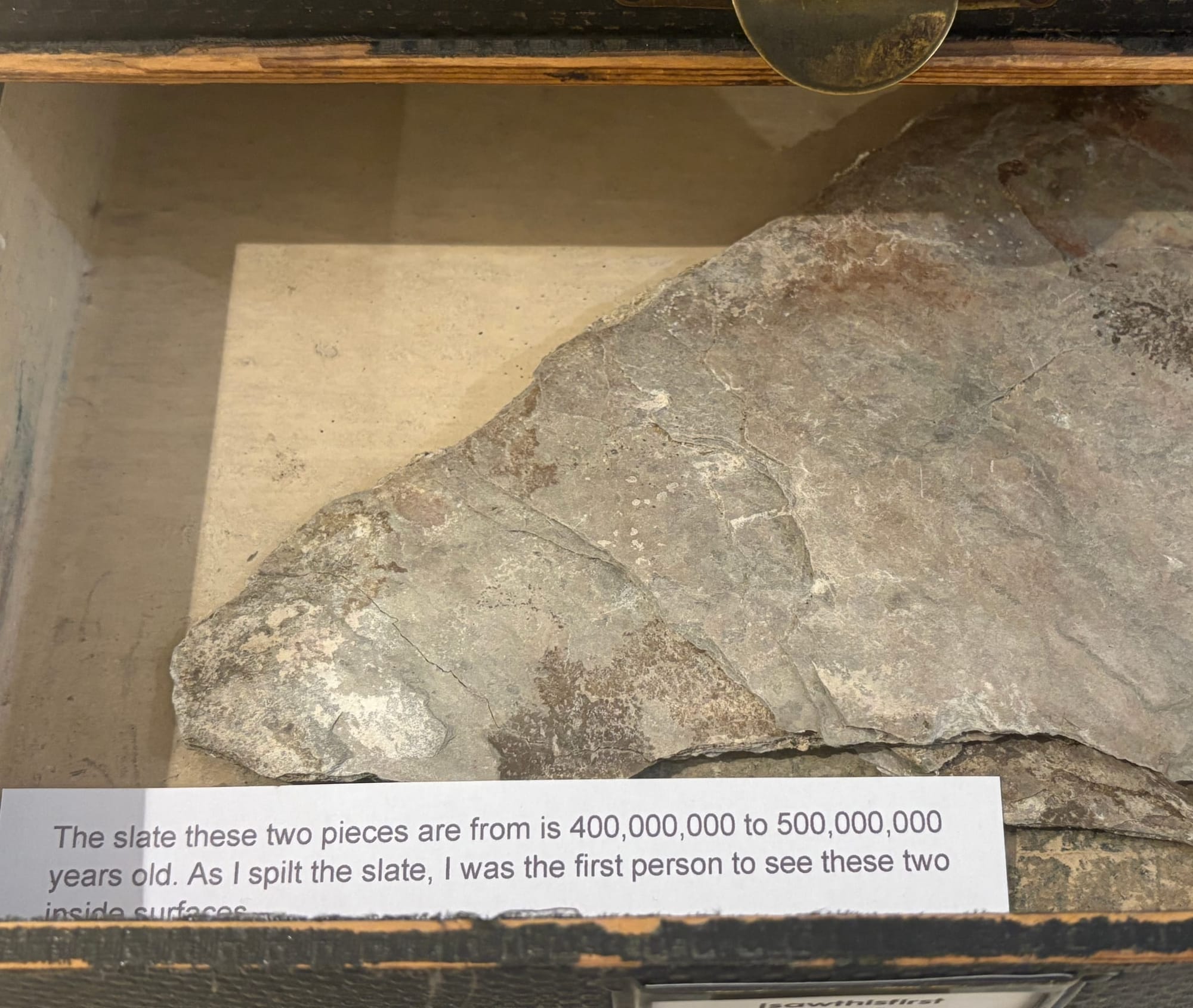
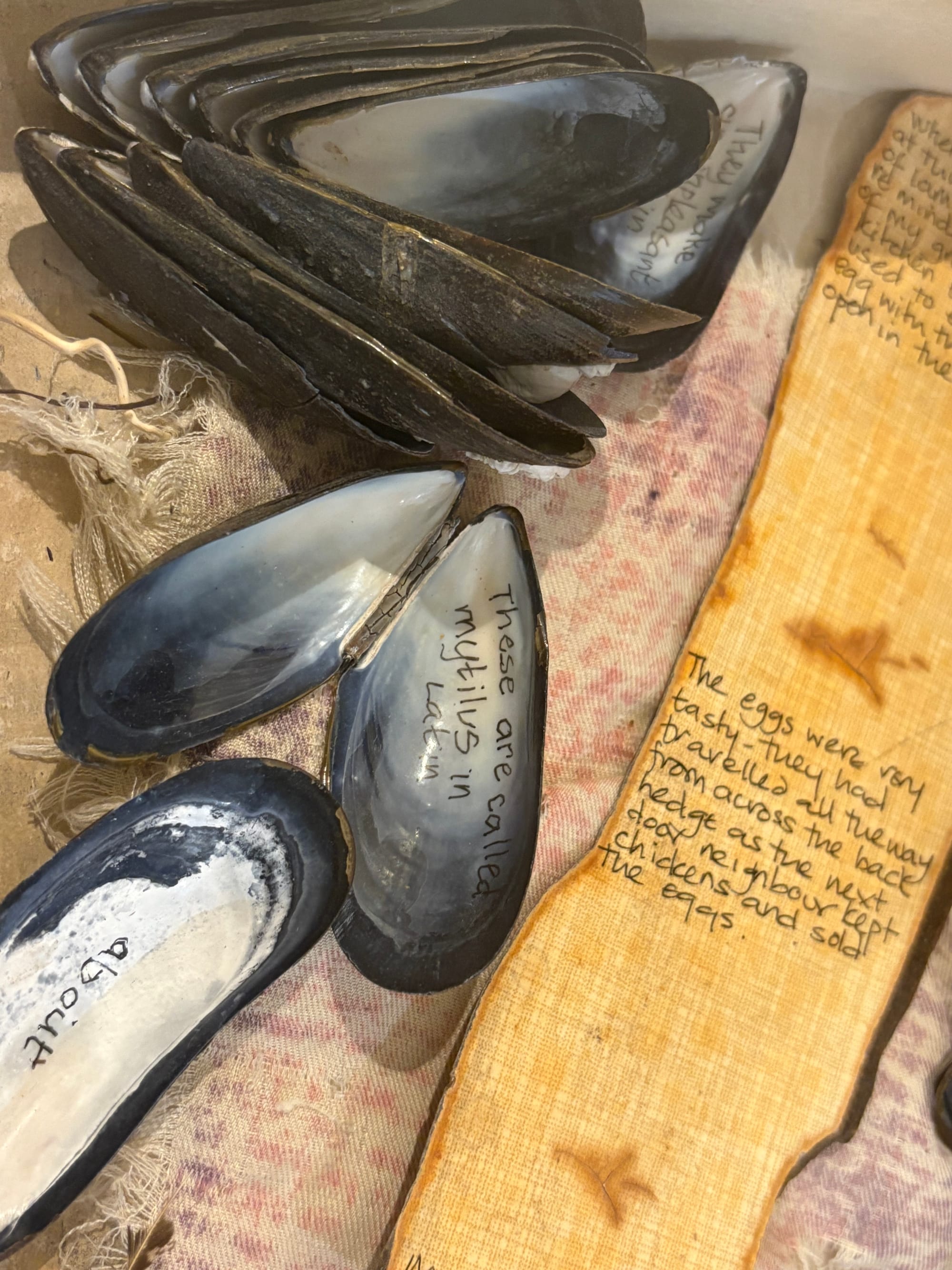
"The Memory Box" by Julie Levy
The piece acts as a bridge between past and present, showing how everyday objects can take on new meaning and come to life. Visitors are encouraged to engage physically with the work by pulling open the drawers and discovering the memories hidden inside. In doing so, we can almost step into Julie’s creative process. The work is a powerful reminder of how words connect with time, and how important it is to record, reflect on, and hold onto our memories.
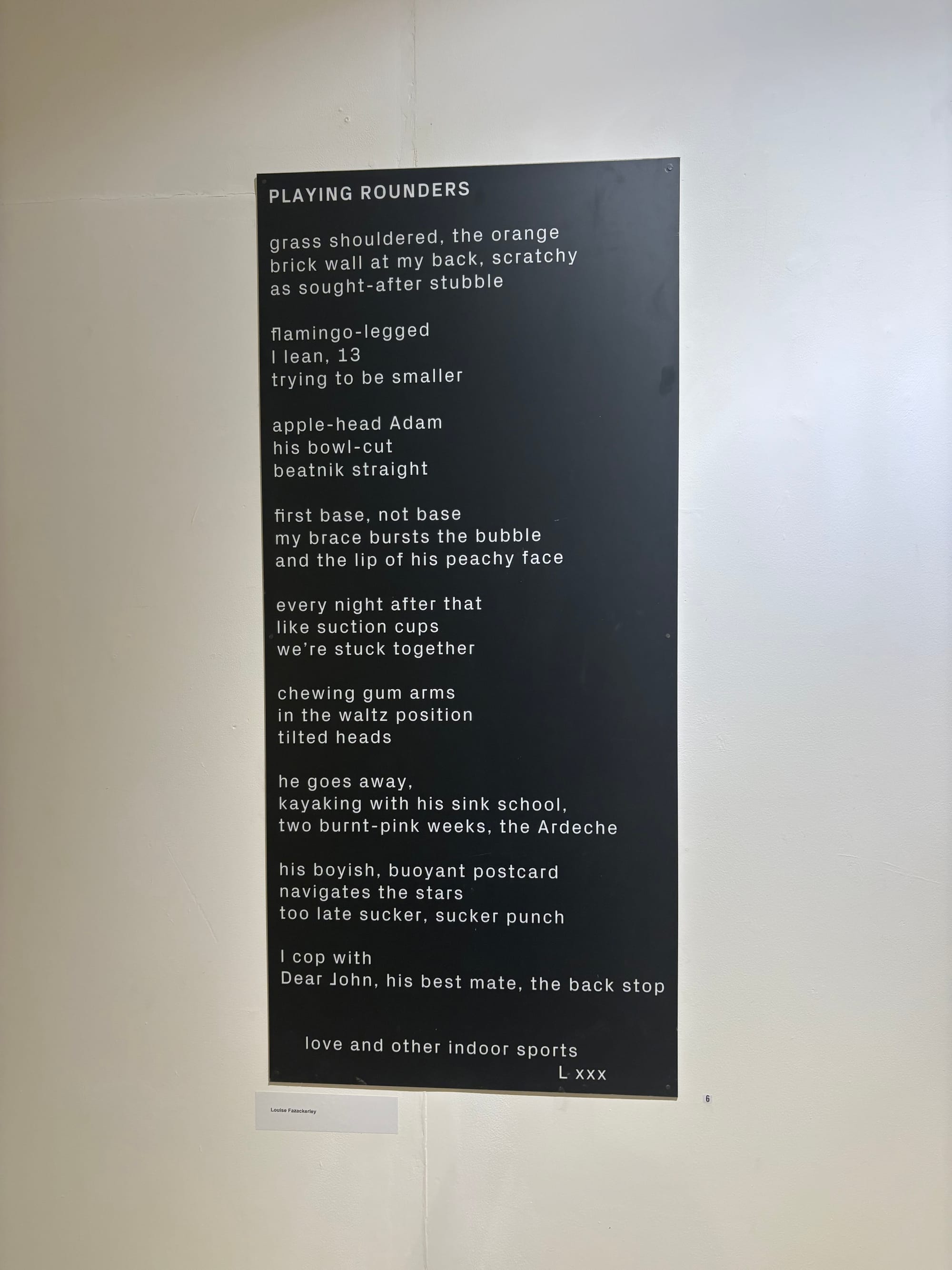
"Playing Rounders", a poem by Louise Fazackerley from her first collection The Lolitas, explores what she describes as “the power teenage girls have and don’t have.” Originally presented as a blackboard piece with white writing by the artist duo Al and Al, it featured in the exhibition Love is a Rebellious Bird at The Fire Within Gallery in Wigan.
The poem captures the essence of long, roasting summers and the heightened emotions of first love. Vivid lines like “grass shredded” and “orange brick wall” help us visualise the scene and feel the tension and energy between the young teenagers. The mix of casual endearments and teasing phrases like “sucker” beautifully portrays the love-hate dynamics and mischievous spirit of adolescence. It’s a piece that stirs up memories of our own teenage years, those first crushes and the rush of feelings that came with them.
Now displayed again as part of exhibition, Louise reflected on seeing her work in a visual art space:
“As a poet, it’s really valuable to have work in an arts space, and I love performing amongst art and visual work. It’s quite inspiring to be in a place with other artists and poets who want to share their work.”
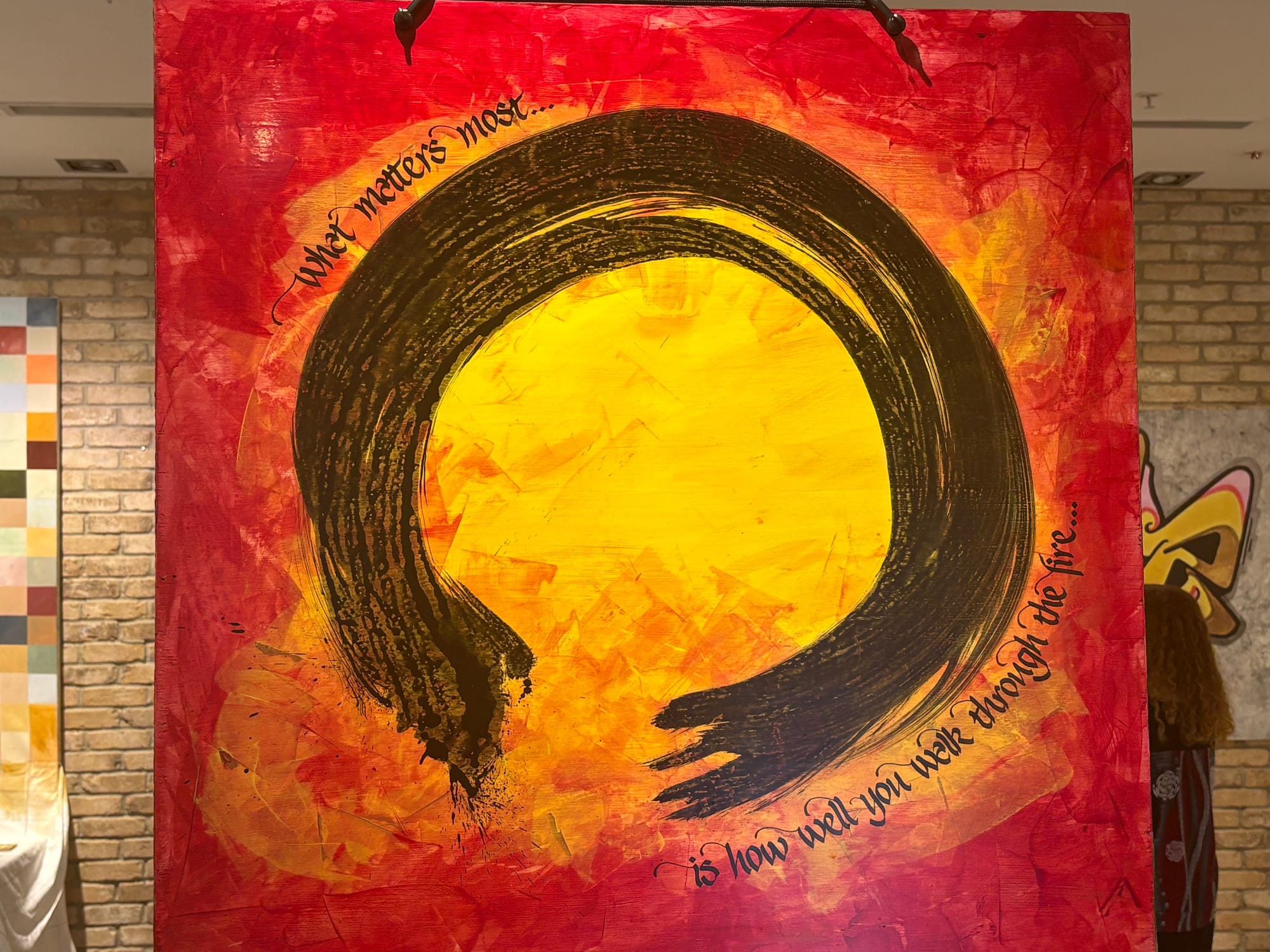
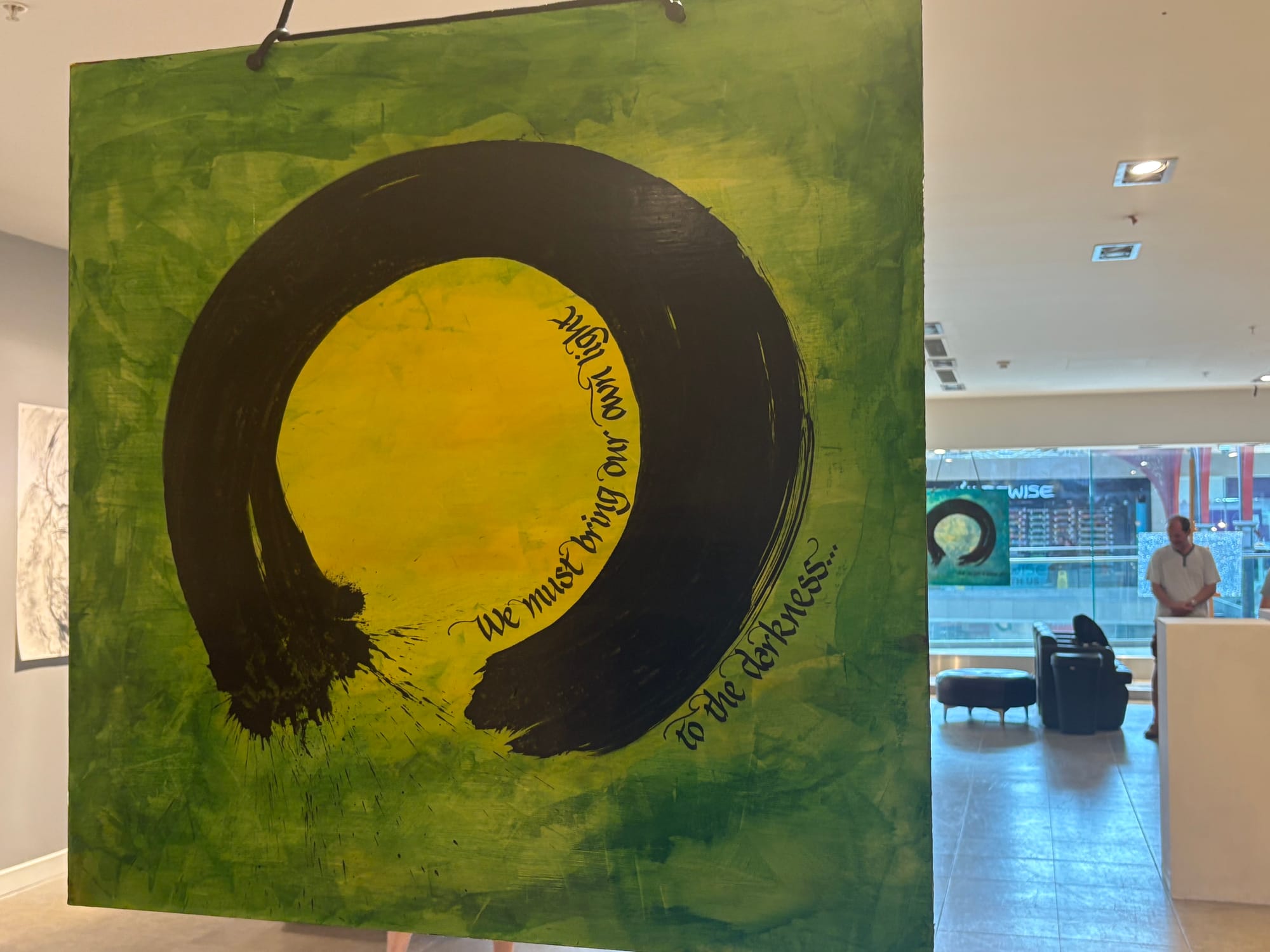
The Ensos by Brian Whitmore
A visually striking piece of art, Brian Whitmore’s bold use of colour and calligraphy immediately catches the eye upon entering the exhibition. At the heart of his practice is a deep appreciation for calligraphy, his love of words, the act of forming them, and the power and mystery they carry. Central to his work is the Enso, a symbol from Zen Buddhism. Traditionally drawn in one or two brushstrokes, the Enso represents the Japanese aesthetic of Zen and is often referred to as the "circle of enlightenment."


